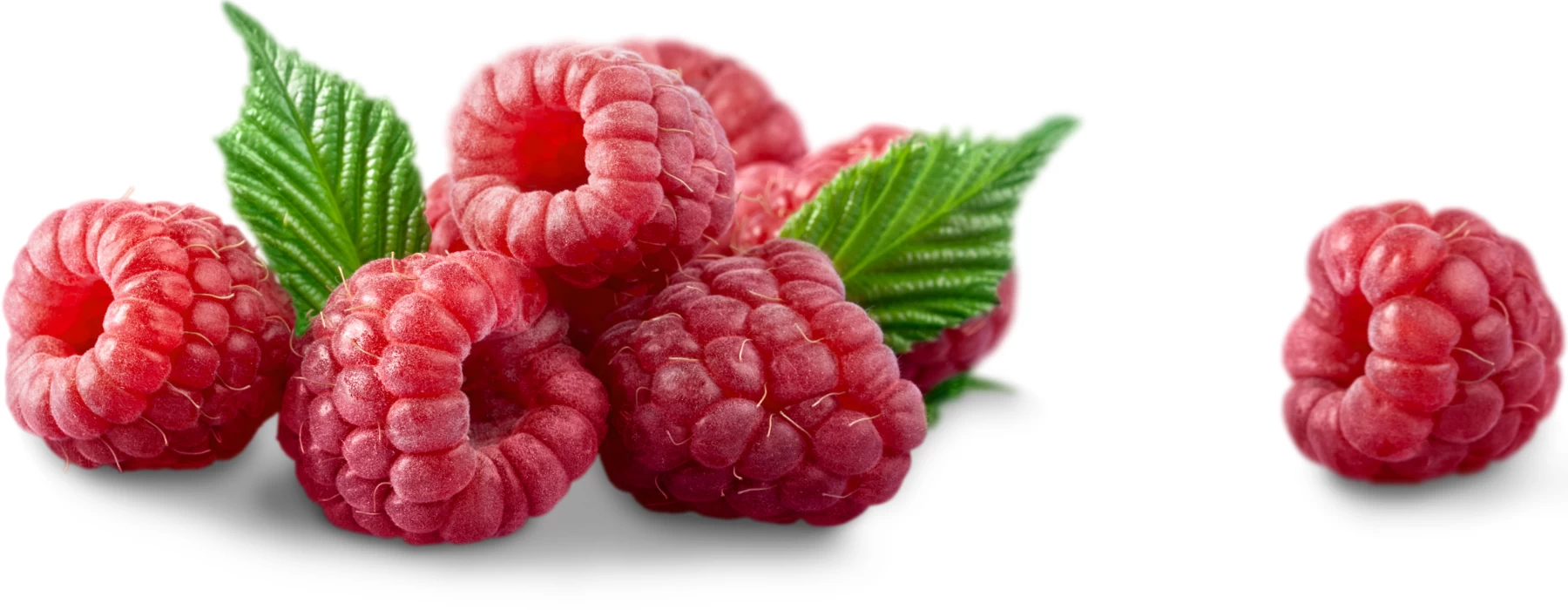Raspberries
Raspberries

Raspberries are small fruits, having many varieties, including black, purple, and golden. But the most popular one is the red variety. Raspberries are native to Europe and Northern Asia and are grown in temperate areas worldwide. Nutritional facts of red raspberries per cup (123 gms):
|
Calories |
64 |
|
Carbs |
14.7 grams |
|
Fiber |
8 grams |
|
Protein |
1.5 grams |
|
Fat |
0.8 grams |
|
Vitamin C |
54% of RDI |
|
Manganese |
41% of RDI |
|
Vitamin K |
12% of RDI |
|
Vitamin E |
5% of RDI |
|
B vitamins |
4-6% of RDI |
|
Iron |
5% of RDI |
|
Magnesium |
7% of RDI |
|
Phosphorus |
4% of RDI |
|
Potassium |
5% of RDI |
|
Copper |
6% of RDI |
Raspberries are an excellent source of fiber and vitamin C. 1 cup of raspberries provides 32% of RDI for fiber in men and 21% of RDI for fiber in women. More than 50% of RDI for vitamin C is provided by just one cup of raspberries. Small amounts of vitamin A, thiamine, riboflavin, vitamin B6, calcium, and zinc are also provided by raspberries.
Health benefits of raspberries:
1. Antioxidants may reduce the risk of chronic health issues
Raspberries are excellent in powerful antioxidant compounds. Antioxidants are plant compounds that reduce oxidative stress caused by free radicals. Increased oxidative stress is linked with higher risk of cancer, diabetes, heart disease, and other chronic issues.
2. Contains high fiber and tannin
Raspberries are low in carbs and high in fiber, having 8 grams of fiber per cup. Just 6.7 grams of digestible carbs is present in 1 cup of raspberries. Raspberries mayflower blood sugar levels and improve insulin resistance. Supplementation of freeze dried red raspberries on mice is linked with lower blood sugar levels and less insulin resistance than in control group. Test groups (raspberry fed mice) also demonstrated less evidence of fatty liver disease. Raspberries are high in tannins, which block alpha amylase, a digestive enzyme necessary for breaking down starch. This reduces the number of carbs absorbed after a meal, hence less impact on blood sugar levels.
3. Reduces the risk of certain type of cancers
Raspberries are high in antioxidants, which may protect against certain types of cancers. In a test tube study, supplementation of berries extract, including red raspberries blocked growth and destroyed cancer cells on colon, prostate, breast, and oral cancer cells. Another test tube study found that raspberry extract can kill upto 90% of stomach, colon, and breast cancer cells. Extensive human studies are necessary before raspberries can be conclusively linked to cancer prevention or treatment.
4. Can help reducing the symptoms of arthritis
The anti-inflammatory properties of raspberries help reduce the symptoms of arthritis. Several animal studies reported reduction in risk of arthritis on supplementation of raspberry extract. Raspberries are believed to block COX-2, an enzyme responsible for causing inflammation and pain.
5. May help in weight loss
Raspberry is low in calories and high in fiber. Additionally, it consists of more than 85% of water. This causes fullness for a long time after having raspberries, without much calorie load. Raspberries contain some natural substance which may aid weight loss. Raspberry ketone supplements are widely promoted for weight loss. However, little research has been conducted on them.
6. May combat aging
Raspberries are high in antioxidants. This helps reduce the signs of aging by fighting free radicals in the body. Vitamin C, present in raspberries are necessary for healthy skin. It improves collagen production and reverses the damage caused by UV rays.
7. Can be easily included to your diet
Fresh raspberries can be used as snacks. Raspberries can be used to make smoothies and served as a topping for various food items, including yogurt, pancakes, or waffles. It can also be added to cereal or oatmeal.
Downsides of Raspberries include:
- They are prone to disease and pests, such as raspberry beetle and raspberry cane blight.
- They require regular pruning and maintenance to ensure healthy growth and fruit production.
- They have a relatively short shelf life and can be difficult to transport and store.
- They are relatively expensive compared to other fruits.
- They are often subject to heavy fruit flies infestation.
- Some cultivars are not winter hardy and may need protection in cold climates.
